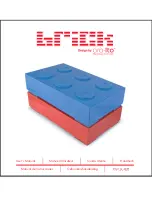
QUANTUM DLTtape HANDBOOK
3.3
Macintosh and its GUI operating system were growing in popular-
ity, having entered through the back door of corporate graphics
departments and in-house advertising groups.
Need for Precision
The TK70 wasn’t enough to quench the thirst for greater storage
capacity and faster throughput speed in tape backup systems. Disk
drive capacity was steadily increasing. Industry was becoming
more dependent than ever on information systems technology.
Databases swelled to overflowing, and tape drives lagged behind
the growing wave.
The storage systems engineers knew that, in order to push the
envelope, they’d have to improve the precision of the tape guide.
Unless the tape was held rock solid in front of the read/write head,
there was little hope of achieving the quantum leap that was need-
ed in tape capacity.
By 1988, digital audio tape (DAT) was about to cross over from the
music world to become the smallest entry in data storage subsys-
tems. However, though small in size, these systems were projected to
store at least a gigabyte (GB) or more. Eight millimeter and VHS
video/data systems were already offering storage capacities of 2GB or
more. Clearly the engineers had some serious work to do.
And, they did it. In 1989, Digital introduced the TF85, the first true
DLT system. The TF85 (later to be dubbed the DLT 260) incorpo-
rated a host of new features that enabled the system to pack
2.6GB onto a 1,200 foot tape (CompacTape
™
III, now known as
DLTtape III). Less than two years after the introduction of the
294MB TK70, the engineers had increased storage capacity nearly
tenfold and made a breakthrough in tape drive performance that
we now call DLTtape technology.















































